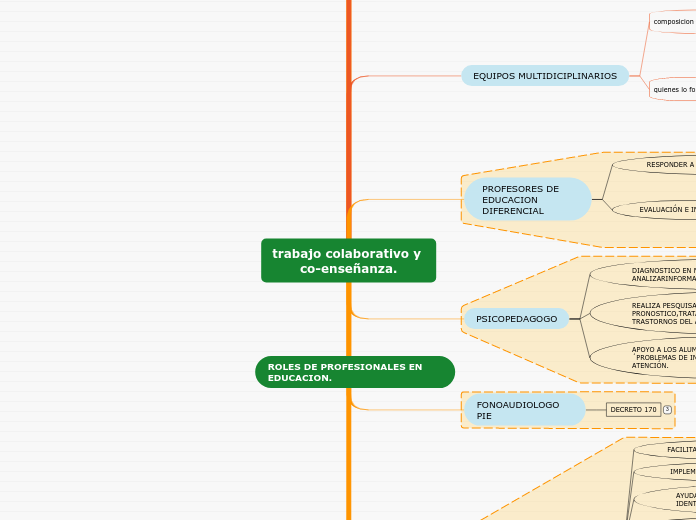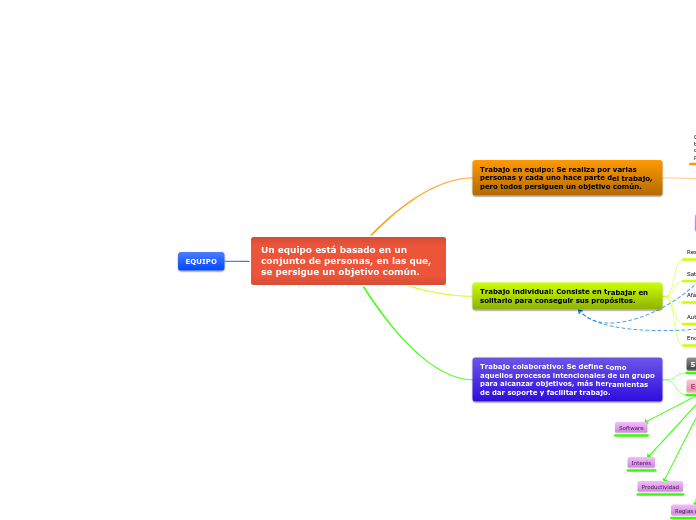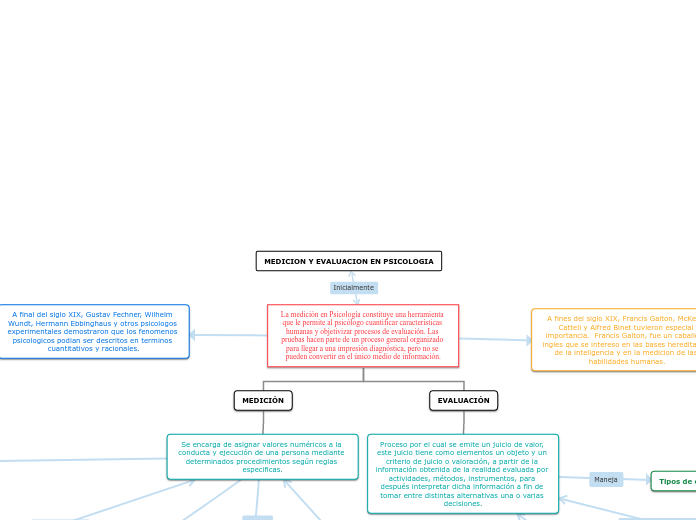Lograr adquirir habilidades lingüísticas correspondientes a sus edad cronológica y características individuales.
ROLES DE PROFESIONALES EN EDUCACION.
multidiciplinariedad se aborda:
estudiantes con barreras frente al aprendizaje.
entrega de apoyos a estuduantes con dificultades
fragmentacion de curriculum
falta de comunicacion y cordinacion entre profesionales
inasistencia
deserción escolar.
EVALUAR ACOMPAÑAR APOYAR COLABORAR
desarrollar programas de prevencion
revelar y promover acciones en la comunidad educativa.
establecer canales de comunicacion
FUNCIONES
trabajo colaborativo y co-enseñanza.
To name your story, you have to think about the overall message and what you want your audience to understand from the story. Also, make it relevant and easy to remember.
PSICOLOGO
ASESORA ALA FAMILIA.
PREVENCIÓN DE BULLYING Y CONFLICTO EN AULA.
ASESOR Y ACTUAN EL REFUERZO DEL DOCENTE
FUNCIONES PREVENTIVAS.
ORIENTACION Y ASESORAMIENTO PROFESIONAL Y VOCACONAL.
INTERVIENE PROBLEMAS DE APRENDIZAJE.
TERAPEUTA OCUPACIONAL.
OFRECER TRABAJO CON LOS PADRES Y CUIDADORES ATRAVEZ DEL MANEJO DE ESTRATEGIAS.
PROVEER PROGRAMAS DE ACTIVIDADES
ESTABLECER VINCULO CON ESTUDIANTES.
ABORDAR DESEMPEÑO DE UN ESTUDANTE.
INTERVENIR PARA CAPACITAR AL ESTUDIANTE.
AYUDAR AL EQUIPO EDUCATIVO A IDENTIFICARASPECTOS DE APRENDIZAJE.
IMPLEMENTAR ACTIVIDADES TERAPEUTICAS
FACILITAR OBJETIVOS EDUCACIONALES
FONOAUDIOLOGO PIE
DECRETO 170
INTERVIENE
DIAGNOSTICA
EVALUA
PSICOPEDAGOGO
APOYO A LOS ALUMNOS CON APRENDIZAJE LENTO, ´PROBLEMAS DE INMADUREZ, CONCENTRACIÓN Y ATENCIÓN.
REALIZA PESQUISAJE, DIAGNOSTICO, PRONOSTICO,TRATAMIENTO Y SEGUIMIENTO DE TRASTORNOS DEL ALUMNO.
DIAGNOSTICO EN NEE; RECOGER Y ANALIZARINFORMACION RELEVANTE DEL ALUNMO.
PROFESORES DE EDUCACION DIFERENCIAL
EVALUACIÓN E INTERVENCIÓN
COMUNITARIA
ESCOLAR
FAMILIAR
PERSONAL
RESPONDER A LAS NEE DEL ESTUDIANTE
EQUIPOS MULTIDICIPLINARIOS
The ending of a story is essential. We all know that if the ending is weak, what happened before loses its importance. So make it unpredictable, but fair. A resolved ending answers all the questions and ties up any loose threads from the plot.
quienes lo forman:
This is the closure section of the story.
See examples of possible outcomes below:
- all problems have been solved
- it's clear how each one of your characters ends up
- your main character is transformed by the challenge
kinesiologo
terapeuta ocupacional
Try answering these questions in order for you to come up with a closure:
- Have all problems been solved?
- Is it clear what happens with all your characters in the story?
- Has the challenged transformed your main character?
- How do the characters feel in the end?
psicologos
fonoaudiologos
Try answering these questions to come up with a closure:
- Have all the problems been solved?
- Is there a clear picture of what happens with each character in the story?
- Has the challenge transformed your main character?
- How do the characters feel in the end?
composicion y actuacion
This is the moment when the main character surpasses the last obstacle and finally faces their greatest challenge.
The climax usually follows one of these patterns:
- realization
- resolution
- choice
Type in your answer.
equipos de aula compuesto por diversos profesionales.
Conformacion de equipos o duplas co-docentes.
The middle of the story is where you add layers of complications that will lead to the end. Reveal more about the character's journey. Did their personality go through changes? How did they overcome the challenges? And as you build up the story’s central conflict, make it more personal to that character. Also, from the middle act, you have to lead into the final act.
tercera fase
There wouldn't be any tension and excitement in your story if there weren't any obstacles in your character's way.
realizacion: involucracion activa en equipo en proceso de enseñanza-aprendizaje.
A story is nothing more than a character overcoming a series of difficulties to reach the desired goal. Obstacles usually create suspense and conflict. In overcoming obstacles, there is growth: weak becomes strong; hatred turns into love; sadness into happiness; wrong into right; lies into truth; or evil becomes good.
See a few examples below:
- stopping a meteor
- finding a killer
- finding love
segunda fase
Your character(s) need(s) motivation in order to solve the challenge(s).
giro simbiotico: reflexionan en conjunto.
Why does your character need to confront this challenge? What does he/she expect to accomplish by solving it?
See a few examples:
- will marry in 3 days
- can fix the mistakes of the past
primera fase
Each story has a main character and that character usually needs to solve a problem or challenge. The character's challenge is the one that creates tension throughout the story.
expectativas de trabajoa realizar.
In most stories, there are 3 challenges. The number 3 is a mystical number symbolizing completeness. Try to come up with interesting challenges with which your character needs to struggle.
See a few examples below:
- turns into a werewolf at night
- is sent back in time
Rol del liderasgo
profesorado regular
Union de dos o mas profesionales que comparten responsabiliddes
comparten experiencias y reflexiones
concepto de co-docencia
In the beginning of the story (or the exposition), you will need to introduce the setting and characters. You might also want to introduce the main conflict. This part of the story is important because it gives the reader necessary background information and maybe even a first insight into a character’s personality.
ofrece a todos los niños sin distincion de discapacidad oportunidad de aprender.
conseguir una educacion comun adaptada a las nee de todos los alumnos.
planificacion, ejecucion y evaluacion
Characters are essential to a good story. Usually, the protagonist(s) is/are the most affected by the plot. Introduce a character by focusing on their actions, interests, and occupation, as the physical appearance doesn't make a difference in most cases.
responder a las necesidades de los alumnos con o sin nee..
Type in the name of your character.










